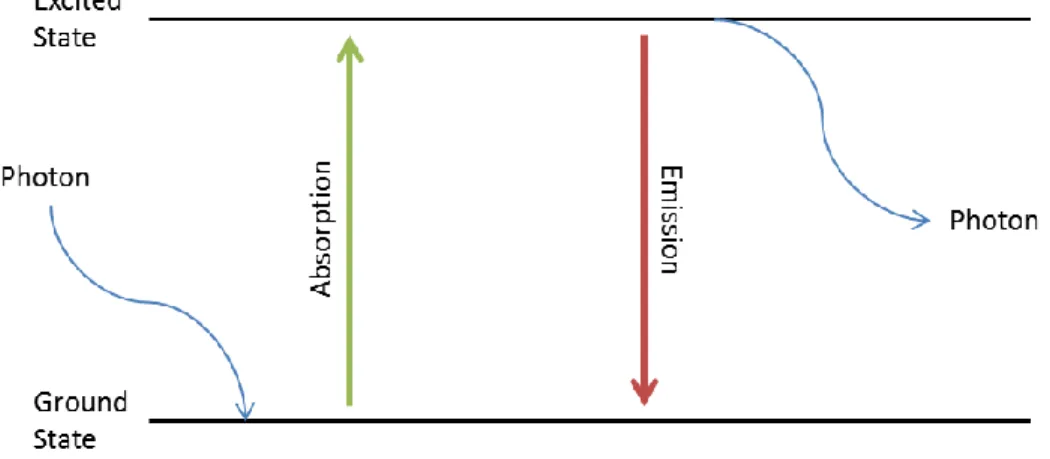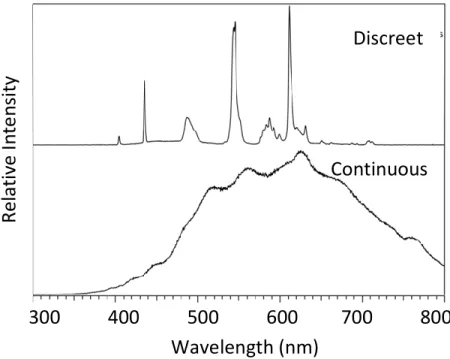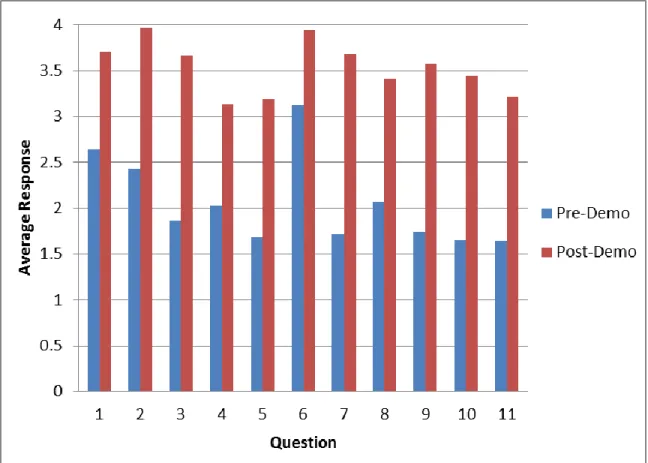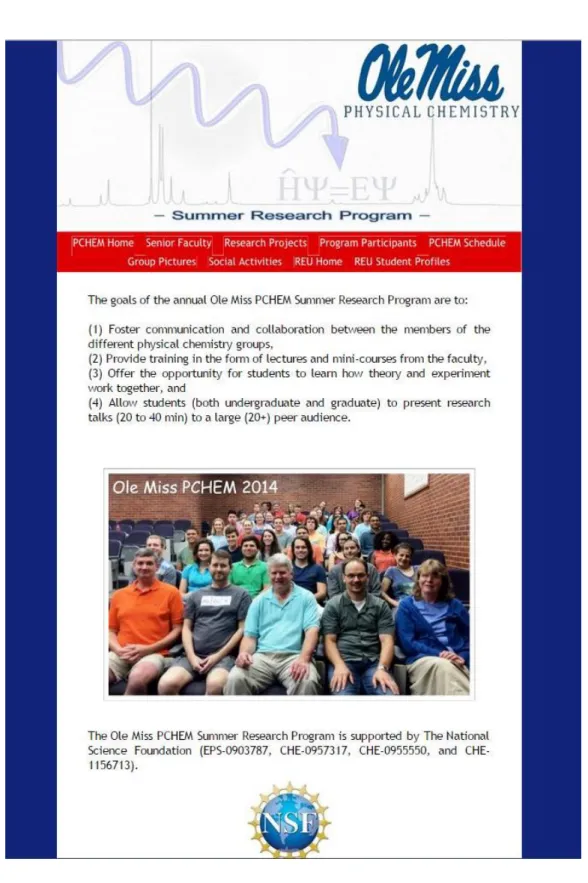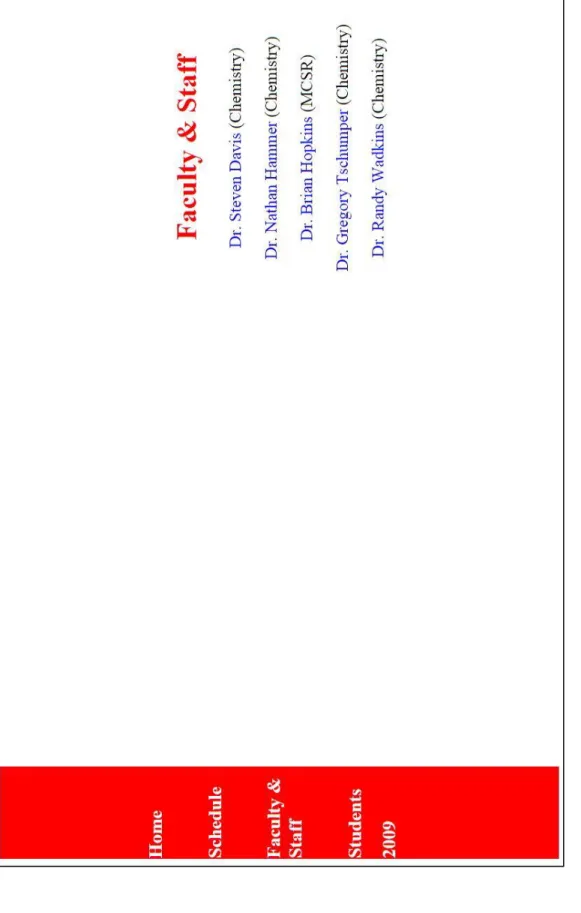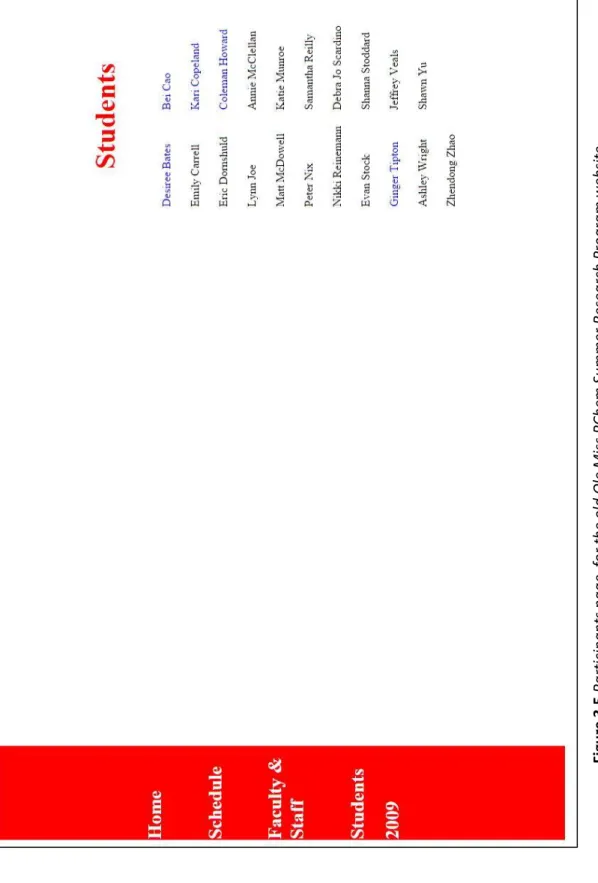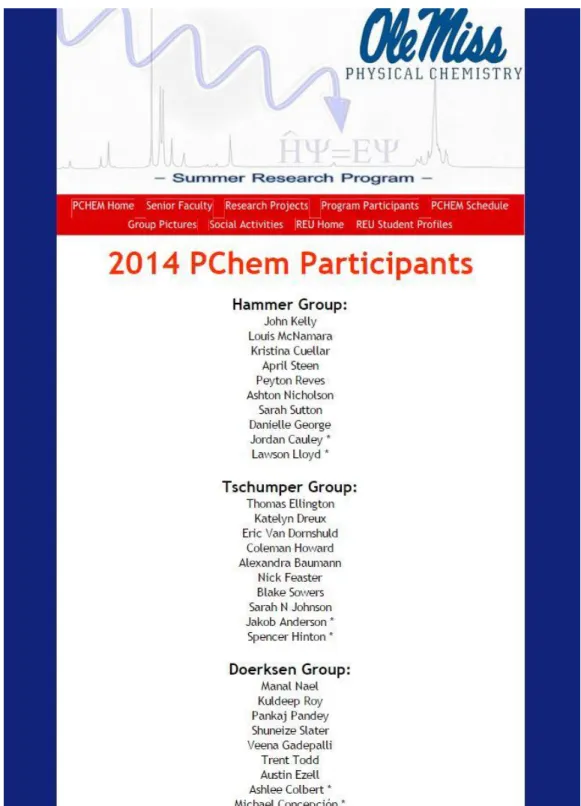Many people in the Department of Chemistry and Biochemistry here at the University of Mississippi were of great help during the work presented here in this manuscript. Gregory Tschumper for serving on my graduation committee and for his advice in the preparation of this dissertation. In addition to the members of the Department of Chemistry and Biochemistry, I would like to thank my family, my friends and members of other departments of the university.
APRIL ELIZABETH STEEN: Using Technology to Engage Students in the STEM Field (Under the direction of Dr. Nathan Hammer). At secondary school level, a physical-chemistry demonstration of the spectroscopy of light was made. To further engage student interest and encourage hands-on learning, the class was allowed to participate in the collection of spectra.
At the college level, a website was created for the Ole Miss Physical Chemistry Summer Research Program and the Research Experience Undergraduate Program. These sites were created in the hopes of increasing student interest and involvement in the programs, as well as student retention in programs leading to STEM majors.
Need to Engage Students in STEM Fields
As of 2013, only 44% of high school graduates are prepared for college-level math courses, while only 36% are prepared for college-level science courses. In 2009, only 21% of high school graduates scored at least proficient on standardized science tests.2 According to ACT test data from 2008, only 17.3% of all high school graduates demonstrated proficiency in math and expressed interest in pursuing a STEM degree. As of 2007, 33% of high school science teachers and 36% of high school math teachers at public institutions either did not have a degree in their subject area or were not certified to teach it. .2 These discouraging statistics have led the White House to implement measures, such as the $40 million STEM Teacher Pathways program, to retain over 100,000 qualified STEM teachers at the secondary education level.4 The STEM crisis cannot be avoided, however, only focusing on STEM education at the high school level; efforts should be made to retain STEM university students.
Of those leaving STEM fields, women, underrepresented minorities, low-income students, students with weaker academic backgrounds, and first-generation students showed higher exit rates than their counterparts. Some schools implement bridging and cohort programs to foster students' sense of connection both to their programs and to their peers. Other schools implement programs such as undergraduate summer research experiences to foster faculty-student relationships, to foster relationships between students and their peers, and to increase student interest in their chosen field.5 By focusing on fostering interest in STEM fields and rising students'.
Using Technology to Engage Students in STEM Fields
Using Websites to Disseminate Scientific Information
These websites serve to inform other researchers, the general public, and potential future group members about the group's ventures.9 Many university students will look at group websites in an attempt to find a research group with projects that pique their interest. With the help of websites it is possible to disseminate scientific information and arouse students' interest in scientific research.
Using Hands-On Demonstrations to Encourage Interest in
While students may otherwise passively learn about a scientific process and not go into too much detail during traditional lectures, hands-on experiments allow them to act as scientists and process information in ways that may make more sense to the individual student. Applying hands-on experiments and technology while teaching STEM content knowledge can help increase students' interest in information and help students retain information more efficiently and for a longer period of time.
5) "STEM Attrition: College Students' Paths Into and Out of STEM Fields", U.S. lt;http://www.census.gov/content/dam/Census/library/publications/2014/acs/acs- 28.pdf >. lt;http://www.internetworldstats.com/stats.htm>.
Creation of a Hands-On Demonstration to Inspire Students’ Interest in
- Introduction
- Procedure
- Results and Discussion
- Conclusions
- Supplemental Documents
- Pre-Assessment/Post-Assessment
- Handout
- Worksheet
- Feedback Form
Figure 2.1 shows a diagram of the electromagnetic spectrum, arranged in order of decreasing wavelength. As can be seen in Figure 2.1, the part of the electromagnetic spectrum visible to the human eye is very small and only includes wavelengths between about 700 nm and 400 nm. The colors of the visible part of the electromagnetic spectrum range from red at 700 nm to violet at 400 nm.1,2.
The range was set from 350nm to 800nm to show the entire range of the visible part of the electromagnetic. The daily uses of the various lasers and the emission and absorption processes involved in the operation of the lasers were discussed. A feedback form was also provided to determine the effectiveness of the demonstration in teaching the concepts presented.
The results of the pre- and post-assessment were analyzed to examine the effectiveness of the demonstration in teaching the desired concepts. An increase in response form was seen in all questions except question six, where the condition remained the same between pre- and post-demonstration assessments. The evaluation of the demonstration showed average responses that ranged from 3.44 for question three to 4.14 for question one.
The mode of the scores for all questions was four, except for question ten which had a mode of five. An increase in the median and mode of the responses was also seen for almost all questions. Visiting additional schools will also help generate more data to better measure the effectiveness of the demonstration.
For each question, please choose the answer that most closely reflects your understanding of the material. I can place the colors of the visible region of the electromagnetic spectrum in order of decreasing wavelength. When you think of light, you probably think of the colors you can see every day.
This happens if the photon's energy matches the energy gap between the ground state and the excited state of the atom or molecule. This demonstration helped me learn the order of colors in the visible region of the electromagnetic spectrum.
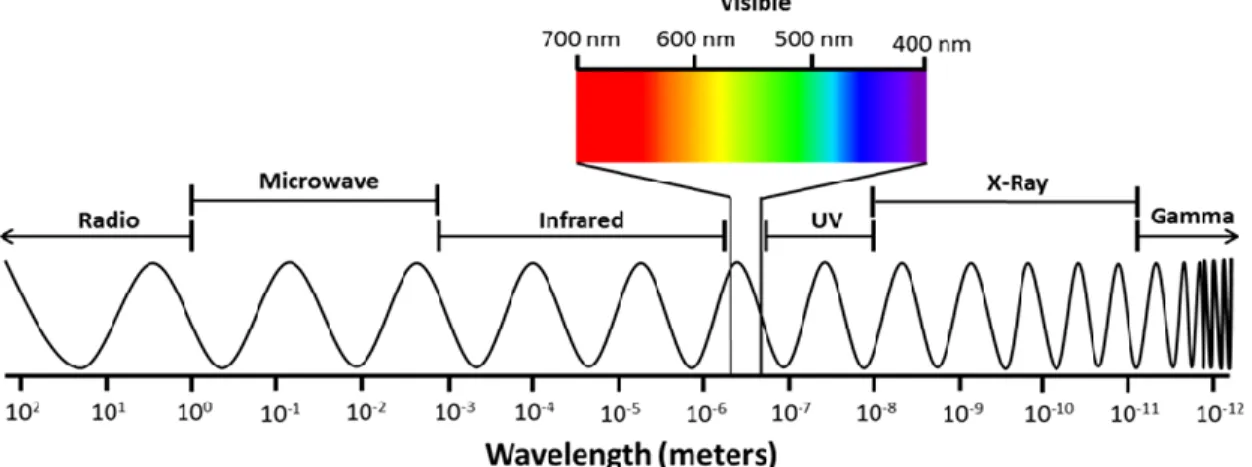
Creation of a Website to Involve Students in the Ole Miss Physical
While the old senior faculty page on the Ole Miss PChem summer research program website only listed the professors' names and with their Ole Miss. Chemistry Department profile pages are linked, the new web page contains their photos and names linked to their groups. As on the first page, the photos of the faculty have been added to make the site more visually appealing. A link has also been added at the bottom of the web page to enable students to learn more about the other faculty members with whom they may interact in the department during the course of the summer program.
The old Ole Miss PChem Summer Research Program faculty page is shown in Figure 3.3. The new Ole Miss PChem Summer Research Program faculty page is shown in Figure 3.4. The old Ole Miss PChem Summer Research Program had all students listed in multiple.
On the new Ole Miss PChem Summer Research Program page, the participants' names were divided into groups based on the research group where they were working. This was done in an effort to illustrate the number of research groups involved in the summer research program and to separate the names in a way that makes them easier to process. The last page to undergo revisions from the original website was the program schedule page.
Each student presentation listed the name of the presenter and the title of their presentation. A research projects page was added to make it easier for students to learn about the projects involved in the Ole Miss PChem Summer Research Program and the REU program. The professional relationships and contacts made during the program are extremely beneficial to the participants and are a highlight of the program.
The REU website was created and integrated into the regular Ole Miss PChem Summer Research Program website. A program flyer and program description have been added to the REU home page. Hyperlinks were also included at the bottom of the page that linked to past profiles of REU participants.
Updates to the Ole Miss PChem Summer Research Program website and the creation of the REU program website were made to increase the effectiveness with which program knowledge was shared. The goals of the Ole Miss PChem Summer Research Program and the REU program include increasing student participation in the sciences and retaining students in the STEM field after they graduate from their undergraduate studies.2 Ole Miss Physical Chemistry Summer Research Program website Miss can be viewed at fizik.kimi.olemiss.edu.
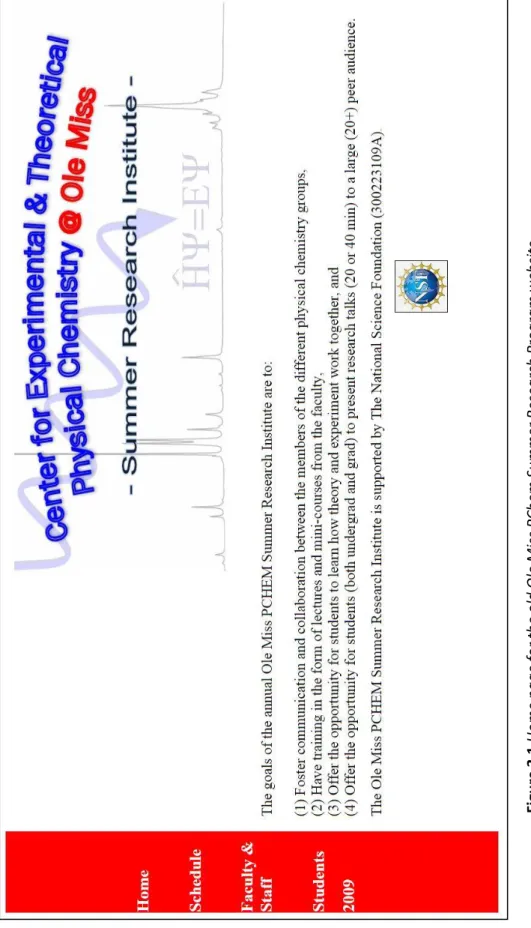
Program Statistics
Several students commented that the program helped them discover what they wanted to do after graduation and encouraged them to pursue careers in STEM.2 We hope that this REU program will continue to inspire students to pursue STEM degrees and that websites will be created will help disseminate information about these programs to encourage student interest and participation.
